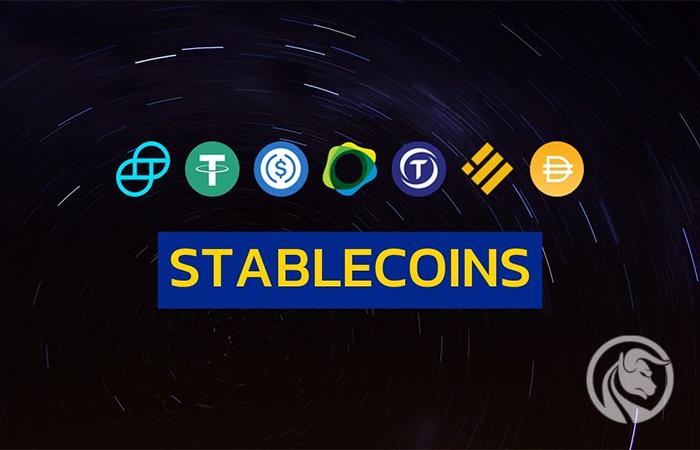Stablecoins - what are they and how do they work?
Cryptocurrencies that accurately reflect the value of traditional currencies? Contrary to appearances, it makes sense, and stablecoins are becoming more and more popular. What are they, how do they work and what are they used for? We invite you to our short and specific guide.
Cryptocurrencies are associated more with firm price movements rather than constant value. No wonder, because even huge fluctuations in the rates during one day are not unusual. However, this is not always a positive feature. If we want to give someone a specific value, the rate should be fairly stable. That is why stablecoins were created - which reflect the value of, for example, fiat currencies.
Cryptocurrencies every day
Stablecoins allow for settlements in cryptocurrencies that are not burdened with exchange rate risk, which may change from hour to hour. Of course, traditional currencies are also changing their value, but these movements are definitely less spectacular than in the case of cryptocurrencies.
Stablecoins are divided into several types, depending on how their rate is stabilized.
Stablecoins tied to fiat currencies
The largest and best known group are stablecoins based on fiat currencies, which reflect their value in a 1: 1 ratio. The stablecoin issuer maintains a specific amount of traditional currency and issues digital units corresponding to its size. An example would be Tether (USDT) - One million USDT is issued for every million USD. They can be traded on the cryptocurrency market and can also be exchanged for dollars at any time.
Stablecoins offer too Cryptocurrency exchanges - incl. Binance. It is now BUSD, reflecting the US dollar and BGBP, reflecting the British pound. This allows you to easily start and finish investments on the cryptocurrency exchange, and also facilitate the settlement and calculation of the profitability of individual investments.
Stablecoins tied to cryptocurrencies
There are also stablecoins based on ... other cryptocurrencies. In this case, however, the issuer is partly ... smart contracts that control the number of digital currency units currently existing. Of course, in this case, the stablecoins are based on the most famous, popular and most used cryptocurrencies: Bitcoin (BTC), Ether (ETH) Ripple (XRP) etc.
The principle of cryptocurrency-based stablecoins is to block cryptocurrencies on a special smart contract that automatically issues a token in the form of a stablecoin. Of course, it can be recovered by reversing the transaction, but it has a small cost - a margin that allows the functioning of stablecoins.
Algorithmic Stablecoins
There are also algorithmic stablecoins that are not directly related to any traditional currency or cryptocurrency. Their supply is managed by smart contracts, similar to what central banks do. Or rather, just as central banks should do it to give monetary policy a real, not discretionary basis ...
In this case, smart contracts reduce the supply of tokens when their price falls, or increase the supply of tokens as their price increases - to keep them at the same level as the currency corresponding to them. However, there are not the same number of tokens in circulation all the time, corresponding to the traditional currency deposited in the deposit.
Where stablecoins are used
The most famous stablecoins are: USD Tether (USDT), True USD (TUSD), Paxos Standard (PAX), USD Coin (USDC) and Binance USD (BUSD). They are used primarily in places where the traditional market intertwines with the world of cryptocurrencies. You can also keep your savings in stablecoins if, for example, you plan to invest them in the cryptocurrency market and want to be ready for it, and at the same time we believe that the risk is too high for now.
Stablecoins are also commonly used by cryptocurrency exchanges to match their quotes and to protect against sudden price spikes caused by excessive demand or supply.
So it is the first safe haven in the world of cryptocurrencies for both individual and institutional investors.






















![Forex Club – Tax 9 – Settle tax on a foreign broker [Download the Application] Forex Club - Tax 9](https://forexclub.pl/wp-content/uploads/2024/02/Forex-Club-Podatek-9-184x120.jpg?v=1709046278)
![Trading View platform – solutions tailored to the needs of traders [Review] trading view review](https://forexclub.pl/wp-content/uploads/2024/03/trading-view-recenzja-184x120.jpg?v=1709558918)
![How to connect your FP Markets account to the Trading View platform [Guide] fp markets trading view](https://forexclub.pl/wp-content/uploads/2024/02/fp-markets-trading-view-184x120.jpg?v=1708677291)
![How to invest in ChatGPT and AI? Stocks and ETFs [Guide] how to invest in chatgpt and artificial intelligence](https://forexclub.pl/wp-content/uploads/2023/02/jak-inwestowac-w-chatgpt-i-sztuczna-inteligencje-184x120.jpg?v=1676364263)


![WeWork – the anatomy of the collapse of a company valued at $47 billion [WeWork, part II] wework bankruptcy story](https://forexclub.pl/wp-content/uploads/2024/04/wework-bankructwo-historia-184x120.jpg?v=1711729561)
![Adam Neumann – the man who screwed up Softbank [WeWork, part AND] adam neumann wework](https://forexclub.pl/wp-content/uploads/2024/04/adam-neumann-wework-184x120.jpg?v=1711728724)





![How to transfer shares to another brokerage office [Procedure description] how to transfer shares to another brokerage house](https://forexclub.pl/wp-content/uploads/2024/03/jak-przeniesc-akcje-do-innego-biura-maklerskiego-184x120.jpg?v=1709556924)

![The most common mistakes of a beginner trader - Mr Yogi [VIDEO] Scalping - The most common mistakes of a beginner trader - VIDEO](https://forexclub.pl/wp-content/uploads/2024/03/Scalping-Najczestsze-bledy-poczatkujacego-tradera-VIDEO-184x120.jpg?v=1711601376)
![Learning patience: No position is also a position - Mr Yogi [VIDEO] Scalping - Learning patience - No position is also a position - VIDEO](https://forexclub.pl/wp-content/uploads/2024/03/Scalping-Nauka-cierpliwosci-Brak-pozycji-to-tez-pozycja-VIDEO-184x120.jpg?v=1710999249)
![When to exit a position and how to minimize losses - Mr Yogi [VIDEO] Scalping - When to exit a position and how to minimize losses - VIDEO](https://forexclub.pl/wp-content/uploads/2024/03/Scalping-Kiedy-wyjsc-z-pozycji-i-jak-minimalizowac-straty-VIDEO-184x120.jpg?v=1710336731)

















